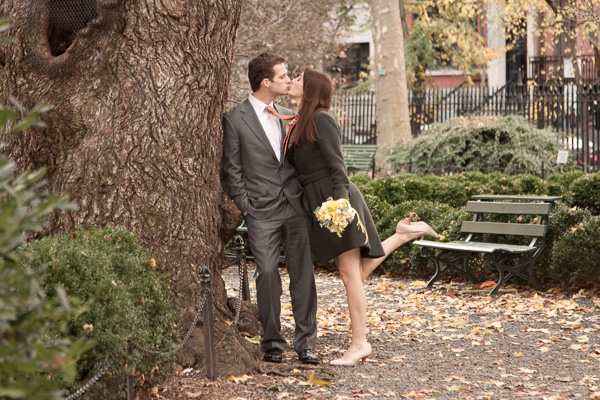The post Tips for Overcoming the 5 Biggest Photography Fears appeared first on Digital Photography School. It was authored by Tim Gilbreath.

“Most inventors and engineers I’ve met are like me. They’re shy and they live in their heads. The very best of them are artists. And artists work best alone…” – Steve Wozniak
While fear can affect anyone and cause undue stress in their daily lives, creative people (including photographers and other artists) are often introverted and can be susceptible to fear more than others.
Whether it is simply a hobby, passion, or profession, photography involves proficiency in both the artistic and technical realms, creating a perfect environment for anxiety and fearfulness to form.
But like with most other things in life, knowledge is a powerful ally. Learning what anxiety-inducing things you might deal with, as well as what you can do to alleviate them, can help you with overcoming photography fears. It also allows you to better and more confidently enjoy the craft.
Let’s take a look at 5 of the biggest fears we might encounter as photographers.
1. Interacting with people
This is something I can definitely speak to personally. Many of us have difficulty being comfortable interacting and communicating with others for several different reasons. It could be anything from simple shyness or a lack of confidence, or in my case, social anxiety disorder, where fear of social interaction can cause physical symptoms and impede daily life.
Because photography is something we choose to do, we can also choose our level of involvement and what facets of the hobby (or job) we participate in.
For me, I know that I don’t always feel comfortable communicating with people. Because of this, I don’t do many portrait sessions as I know that communicating in real-time with the client is necessary to produce photos that they will love.

Many photographers deal with the fear of interacting with clients. (50mm, f/4, ISO 100, 1/250 sec)
Instead, my photography focuses on landscape and nature scenes, which lets me be comfortable while enjoying my work. I take on the odd portrait job when I feel ready to do so.
Of course, many of us want to learn to embrace that fear and conquer it. The best way to do this is to expose yourself to the thing that makes you uncomfortable. Learn what about it makes you feel that way until you no longer have the same fear for it.
Work on becoming more comfortable around people on a small scale, so that you’ll be ready to speak confidently to your clients.
Know your gear well, and be knowledgeable about the particular service you’re providing. This will give you something stable to hold onto while interacting with your customers.
2. Shooting in public
Street photography is a popular form of photography, and some of the biggest names in our hobby dabble in it, at one time or another.
However, it also exposes the photographer more than some other forms and can make us feel nervous and vulnerable. This is because many people don’t care to have their photograph taken. Knowing that can make the photographer reluctant to open themselves up and capture the beautiful moments they see before them, for fear of being called out or confronted.
Many street photographers deal with these issues by using gear that is better suited for those situations. Small, light, and inconspicuous mirrorless cameras and smaller lenses are readily available. These make the photographer and their actions less visible. It allows them to be more comfortable and focus on making great images.

Shooting in public, in view of others, is another common fear of photographers. (50mm, f/8, ISO 400, 1/640 sec)
It is also helpful and important to know the rules and laws regarding photographing people in public or other spaces. That way, if someone does confront you or question what you’re doing, you’ll be well-prepared to answer them.
The bottom line is to respect everyone’s wishes, whether it’s a legal issue or not. If someone is uncomfortable with you photographing them, be a decent person, and just stop. You don’t have to delete the images or anything that extreme, as they are your images, but don’t continue photographing them. An upset subject isn’t going to make for a good photo anyway.
At the end of the day, keep in mind that there are thousands of people out there right now, taking pictures of daily life, people, places, and events. Chances are, you’ll go out and enjoy the experience without any problems, and you’ll bring home some unique images.
3. Rejection and failure
This is a common fear for many people, and unfortunately, it is one that we all experience at times. Rejection of your work or failure to produce work that you consider great will be a commonplace occurrence throughout your relationship with photography. Even the great ones dealt with rejection at times, and they often used these failures to learn more and make adjustments to be even better.
Although there is nothing you can do to completely avoid rejection or avoid producing an imperfect image, you can certainly learn to cope with it and overcome photography fears.

Conquer your fear of failure by tackling challenging situations. (iPhone, 4mm, f/2.2, ISO 640, 1/4 sec)
Firstly, don’t try to block out the emotions that come with rejection or failure. You need to know what it feels like and embrace that feeling. It will make you stronger, and you will be better for it.
Keep in mind that failure is an exception, not the norm.
Also, remember that repetition is the key to improving.
Tackle some challenging situations, such as a dark and challenging lighting scenario. Go through the possible solutions and execute them until you’re confident that you can solve that problem in a dynamic, on-demand environment.
And, talk to someone.
Talk to anyone who knows you and understands how passionate you are about your craft. Friends, family, and colleagues who lift you up and encourage you can provide tremendous help. They can remind you that rejection can happen to anyone, and is a learning tool to improve your skillset.
4. Cameras and gear
The title of this section might need a little explanation. Of course, we’re talking about the fear of using your cameras and gear, not fear of your camera itself! That would be weird.
The equipment we use can come in various levels of complexity. Regardless of your familiarity with cameras in general, it may inadvertently become another source of anxiety.
Fortunately, the days of being stuck with nothing more than a printed manual are gone (isn’t it nice when we still see them, though?). The current digital age allows us to learn everything we need to know about our cameras from many sources.
Blogs like Digital Photography School, digital manuals and online resources from camera manufacturers, Forums such as Reddit, and YouTube all provide endless means of learning about the ins and outs of your equipment.

Knowing your camera and other gear inside and out can help bolster your confidence. (50mm, f/4, ISO 100, 1/640 sec)
The bottom line is, the more you know about the equipment you’re using, the more confident you’ll be in the field or studio. The more informed you are about the camera, the less an arising problem will shake you.
Learn all you can as early as you can. Like one of my favorite old sayings goes, knowledge is power.
5. Knowledge of business and marketing
Last in the tips for overcoming photography fears is our knowledge of business and marketing. Many of us have a fear of the business side of our passion for photography.
If you intend on working as a professional (meaning you make any amount of money off of your photography, regardless of your time input), you are going to need to understand the basics of how business works.
You need to know how to price your products and services, and how to interact with clients on all levels.
Again, through the wonder of technology, the internet is a treasure trove of information (often free) that can give you a good background and bolster your confidence with knowledge.
Many people feel that it’s tough to get a good working understanding of how small business works without taking classes or even having a business degree.
Fortunately, that’s not the case. A quick Google search will reveal many free blogs and other resources that can help you, and many of these are even specific to the business side of photography.
dPS has a great e-book on Going Pro – Making Money from Your Photography.
Fear not, my friends
Overcoming your photography fears may not seem simple, but I hope this article has helped you identify some of your fears and worries when it comes to being a photographer. Maybe it even pointed you in the right direction of overcoming those photography fears.
Remember, this is your passion, and you do it because you love to, not because you have to.
At the end of your day, there is nothing to be afraid of, because you’re doing something that makes you happy.
Are there other fears you experience that we didn’t cover here? Sound off below and share them with the rest of us. You’ll probably be surprised to find how many other people feel the same way!
The post Tips for Overcoming the 5 Biggest Photography Fears appeared first on Digital Photography School. It was authored by Tim Gilbreath.















You must be logged in to post a comment.